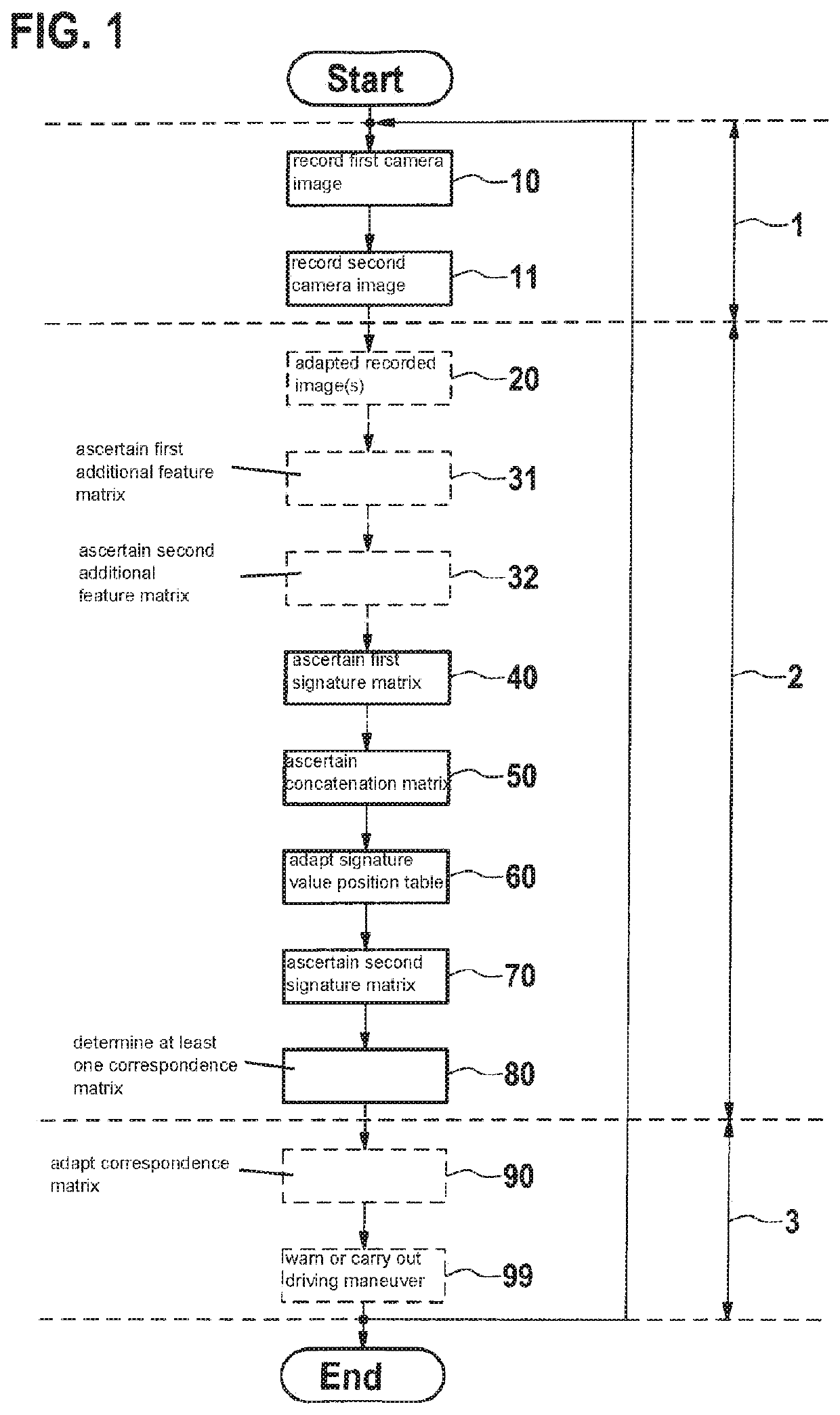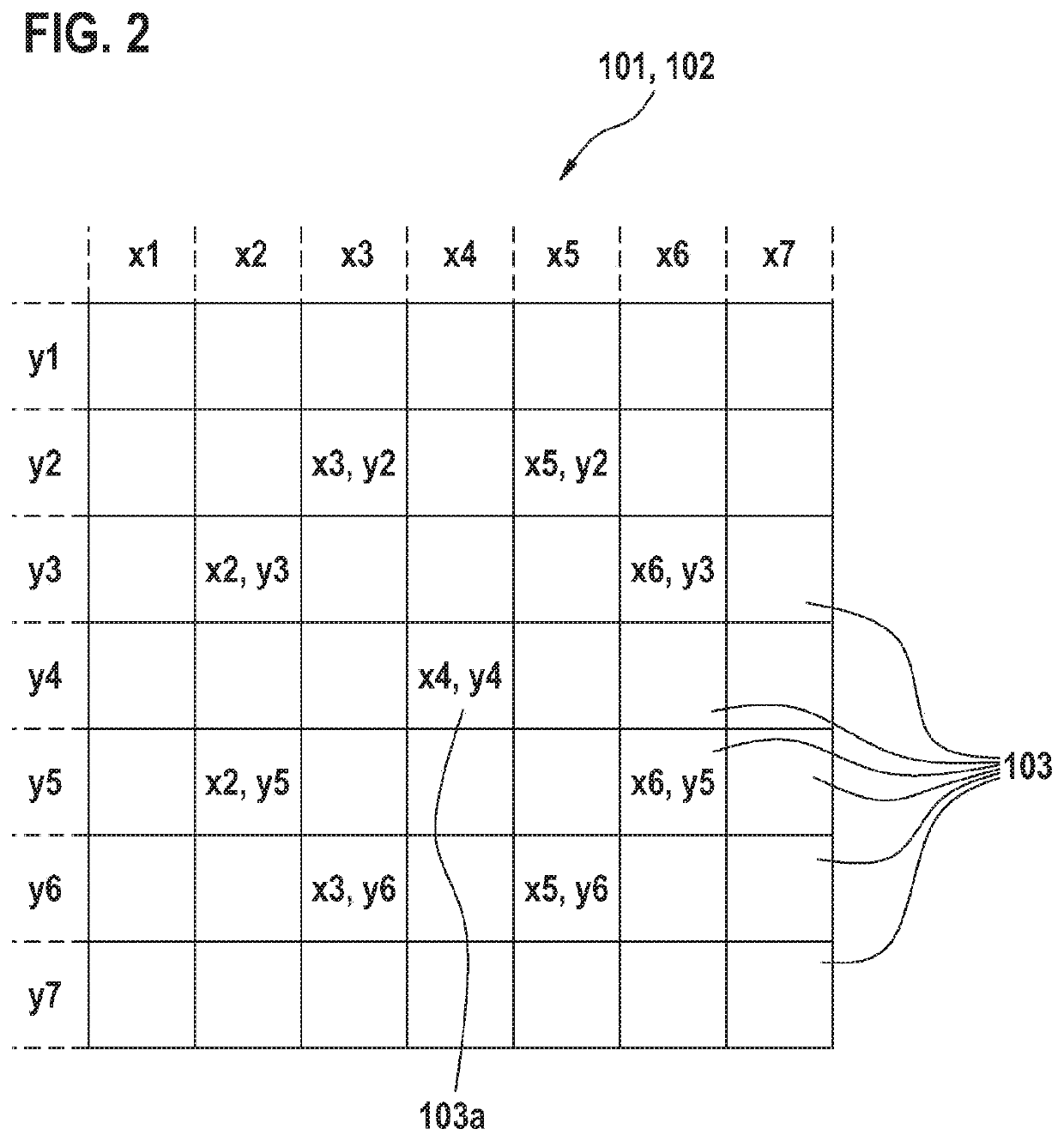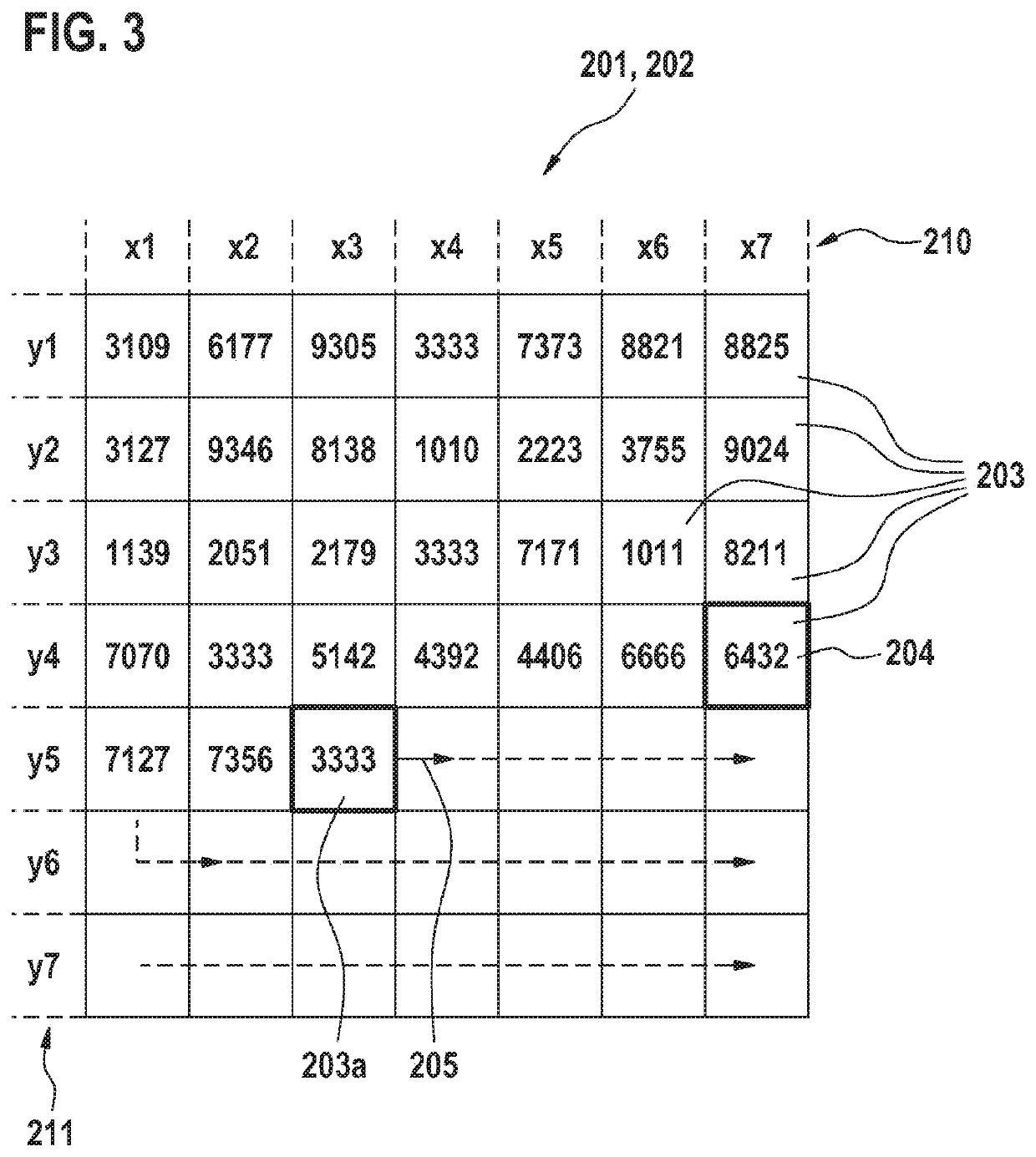Method for determining mutually corresponding pixels, SoC for carrying out the method, camera system including the SoC, control unit and vehicle
a mutually corresponding and soc technology, applied in the field of mutually corresponding pixels, to achieve the effect of rapid and efficient determination, increased recording rate, and fast and efficient determination
- Summary
- Abstract
- Description
- Claims
- Application Information
AI Technical Summary
Benefits of technology
Problems solved by technology
Method used
Image
Examples
Embodiment Construction
[0034]A flowchart of the method is depicted as a block diagram in FIG. 1. The method starts with a recording 10 of a first camera image, the first camera image being updated at a predefined recording rate. A second camera image is subsequently recorded in step 11. The first and the second camera image have a predefined resolution. Furthermore, recording 10 of the first camera image and recording 11 of the second camera image each take place at the predefined recording rate, the first camera image and the second camera image being recorded, for example, with the aid of a camera and having a predefined time offset relative to one another. For example, recordings 10 and 11 take place at 60 camera images per second, the first and the second camera image each having at least one XGA resolution, i.e., that each recorded camera image includes at least 1024×768 pixels. The first and the second recorded camera image each advantageously have a FullHD resolution with 1920×1080 pixels and parti...
PUM
 Login to View More
Login to View More Abstract
Description
Claims
Application Information
 Login to View More
Login to View More - R&D
- Intellectual Property
- Life Sciences
- Materials
- Tech Scout
- Unparalleled Data Quality
- Higher Quality Content
- 60% Fewer Hallucinations
Browse by: Latest US Patents, China's latest patents, Technical Efficacy Thesaurus, Application Domain, Technology Topic, Popular Technical Reports.
© 2025 PatSnap. All rights reserved.Legal|Privacy policy|Modern Slavery Act Transparency Statement|Sitemap|About US| Contact US: help@patsnap.com



